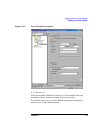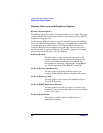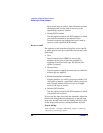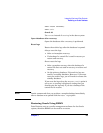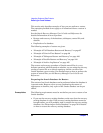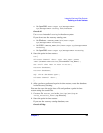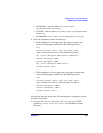
Integrating Oracle and Data Protector
Restoring an Oracle Database
Chapter 194
This section only describes examples of how you can perform a restore.
The examples provided do not apply to all situations where a restore is
needed.
See the Oracle Recovery Manager User’s Guide and References for
detailed information on how to perform:
• Restore and recovery of the database, tablespace, control file, and
datafile.
• Duplication of a database.
The following examples of restore are given:
• “Example of Full Database Restore and Recovery” on page 97
• “Example of Point-in-Time Restore” on page 98
• “Example of Tablespace Restore and Recovery” on page 100
• “Example of Datafile Restore and Recovery” on page 102
• “Example of Archive Log Restore” on page 105
The restore and recovery procedure of Oracle control files is a very
delicate operation, which depends on whether you are using the recovery
catalog or control file as a central repository and the version of the
Oracle database you are using. For detailed steps on how to perform the
restore of control files, see the Recovery Manager User’s Guide and
References.
Preparing the Oracle Database for Restore
The restore of an Oracle database can be performed when the database is
in mount mode. However, when you are performing the restore of
tablespaces or datafiles, only a part of the Oracle database can be put
offline.
Prerequisites The following requirements must be met before you start a restore of an
Oracle database:
• If you use the recovery catalog database, make sure that the recovery
catalog database is open. If the recovery catalog database cannot be
brought online, you will probably need to restore the recovery catalog
database. See “Restoring an Oracle Database” on page 70 for details
on how to restore the recovery catalog database.




